The Definitive Guide to Book Genres
Everyone has a type. Be it people, music, movies or books. With music and books especially, the ‘my type’ is more evident, which we call, the genre here. The genre is defined by Google as ”A category of literary composition determined by the tone, technique, and content”. That is Google for you, but to simplify, just imagine, you are at a confluence of roads. There are five paths, each further splits into five more, leading you to a world of accolades and glory. Which path you choose to take is the biggest decision you will have to make. You cannot walk down a path and change your mind mid-way and course-correct, you will lose track of what’s happening, wouldn’t you? That is genre for you. It’s the path that you choose for your book to take. This path keeps your book on-track and becomes an identifier for it. Such categorization into relevant labels will make it easier for you to target the desired audience and for the readers to discover your book. People come with different tastes and interests, some may like romance and some, humor, and some others would find suspense and thriller books to be cathartic. That is why the genre is important, you can reach out to different sets of people and appeal to different interests and sensibilities. Broadly; it is divided into fiction and non- fiction. But, it does not stop there, like the paths fiction branches out into so many other sub-genres and so does non- fiction. With this Book Genres guide, we hope to shed some light on some of the genres and sub-genres that are closely related but not the same and help you choose the right one for your book.
BROAD CLASSIFICATION of Book Genres
When we dig deeper into this, we find that the Greek philosophers Aristotle and Plato came up with the then version of genre according to which they classified literature into three forms namely, Poetry, Drama, and Prose, which, later lead the way to the current classification system for fiction and non-fiction respectively. Now, seen as a part of pop-culture, it has become a way of defining oneself, people start identifying themselves with a particular genre and take pride in the association.
Fiction versus non-fiction, take a look at this infographic https://notionpress.com/blog/infographic-fiction-vs-non-fiction/ to understand the basic differences between the two.
FICTION
The most popular genre amongst readers, fiction deals with narratives that are made-up and well, fictional. This is an imagined work and is not so close to reality. Works of fiction need not entirely be imaginary; some sub-genres include real people, places and also events. Fiction is the popular genre out of the two just because, people like to experience the ideas and feelings that a fictional book offers and also people see it as an escape from reality. Broadly, most books fall under this genre as this genre allows for creative expression; hence the highest number of sub-genres. It’s a common conception that fiction is very artistic and so is seen as an extension of art. There is a lot of confusion owing to the wide number of closely related sub-genres. Some subgenres are similar or overlapping, and defining such genres is not easy. Here we will discuss the differences between some of the subgenres of fiction that are similar or closely related.
CRIME/MYSTERY
Crime and mystery as genres of fiction have been doing very well world-over. Especially, the sub-genre of spy fiction is the favorite. These books usually focus on solving a crime, usually a murder. This murder sets the events and the backdrop for the book. Usually, the protagonist is an investigator of some type, takes us through the story and untangles the mystery and finds the perpetrator in the end. The most famous example for this genre is The Adventures of Sherlock Holmes by Arthur Conan Doyle which features the famous fictional detective Sherlock Holmes. This genre is notorious for its wide variety of sub-sub-genres, from spy thrillers to historical crime; this genre has been seeing some real action recently. The Girl with the Dragon Tattoo by Stieg Larsson is a great example, published posthumously; the book went on to win critical acclaim and ended up being adapted into a movie starring Daniel Craig and Rooney Mara.
HISTORICAL FICTION
The current Indian favorite is historical fiction. It typically has the narrative set in the past. Like in the classics, where the characters play a major role, in historical fiction, the time period plays an important role. It may include fictional characters or famous personalities or a mixture of the two. The unique thing that separates historical fiction from plain history books is that there is an element of fiction attached. Famous events appear but have a fictional twist to it. The reason that authors love this genre is that there is an artistic license that is allowed in this genre. Ponniyin Selvan, a famous Tamil novel, authored by Kalki Krishnamoorthy is an out and out historical fiction novel. The story recounts the era of Raja Raja Chola I and the events surrounding his ascension to the throne with a fictional element to it. Another book, in that, has become everyone’s favorite, is The Shiva Trilogy by Amish Tripathi, who self-published his first novel, The Immortals of Meluha, after being rejected by many publishers. Ascertaining whether your book goes under this genre is very straight-forward, does it include history and is also fictional? Then, you know where it goes.
SURREALISM/MAGICAL REALISM
Just the names of these authors will give you a fair idea of the difference between the two genres. Haruki Murakami, for Surrealism and, Salman Rushdie for the latter. Even though they may sound similar, they are in fact two different genres. Surrealism as the name denotes deals with a narrative that is surreal. It portrays events like a dream and doesn’t have a strong logic to it. Whereas, magical realism blends magic with realism. The unique aspect to it is that magical realism narrates the stories from different perspectives of people who have very different realities. For example, in Salman Rushdie’s Midnight’s Children, the story is about a telepath who recounts his story to his fiancé, set during India’s Independence. This is magical realism, because, this is based on the story of Salman Rushdie himself, but with elements of supernatural powers like telepathy skilfully wound around it. That is the difference between Surrealism and Magical realism. Surrealism is more abstract, whereas magical realism is realistic, but not so much. It’s just a degree of difference, really.
SCIENCE FICTION/ DYSTOPIA
The complete opposite of Historical Fiction, Dystopian, and Science fiction is set in the future or in a parallel universe. Some people claim that dystopia is a sub-genre of Sci-fi. But they are two different things. To put it simply, dystopian novels are set in a world that is just worse in every sense. It deals with oppressive control by an autocratic government or person, under the illusion that it is the perfect society. It usually is very critical about politics, social values, religion etc. The famous one is, of course, 1984 by George Orwell, where he talks about a society ruled by the autocratic Big Brother. It is an out and out dystopian novel set in a dystopian world. Whereas science fiction is not that somber, it is just a novel with a scientific or technological angle to it and explores its impact on the society. The most famous example would be The Hitchhiker’s guide to the galaxy by Douglas Adams, where the protagonist Arthur’s friend is an alien, Ford Prefect. Dystopian novels are set in an unpleasant society while science fiction is just a narrative that talks about Science and Technology and aliens.
Genre Check: Oppressive society = Dystopia, Aliens and or science and technology = Science fiction.
GENRE FICTION- NEW
A new genre crops up every day. Authors mix and match different sub-genres and come up with their own. But the ones mentioned below are so famous that they have spewed out a wide variety of books and have become a separate genre. It is noteworthy that these genres are fairly new and cater to a very specific set of audience.
FAN-FICTION
With the advent of the Internet and social media, a new genre has started doing the rounds. Fan Fiction or Fanfic is a genre that is very specific to the online publishing field. Even though people don’t consider it as a legitimate genre, one cannot overlook the fact that this genre has a huge fan base. Fans are very passionate about literary characters, and this inspires some of them to produce new, original storylines based on their favorite characters. The most interesting point is most of these books are erotic. Yes, we know what you are thinking; the very famous 50 Shades trilogy started off as a Fan-fiction to Twilight. E.L.James was inspired by the characters Edward and Bella that she started writing it as a fan-lore, people loved it so much, that she went on to publish it as a novel. Erotica is the most popular genre that falls under fan-fiction. Sylvia Day wrote a clone of 50 shades trilogy called Bared to you, which she self-published. This book went on to be declared the fastest selling paperback of the decade.
YOUNG ADULT
No longer in the category of sub-genres, young adult has come to be defined as a separate genre of its own. Books written for readers, aged between twelve to nineteen years. The protagonist is always of that age group. It typically deals with coming-of-age stories and tracks the issues that a young adult faces in their daily lives. But since this genre has grown tremendously in the recent times, different sub-sub-genres are being invented. Some of the major themes of these books include identity issues, sexuality, suicide, depression, bullying, drug abuse, and of course romance. Looking for Alaska by John Green is the right example for this genre.
Take a look at this site, http://www.dailywritingtips.com/35-genres-and-other-varieties-of-fiction/ gives you a list of various other subgenres under fiction.
NON-FICTION
Simply put anything that recounts facts or represents an actual event can be termed as non-fiction. The presentation may or may not be accurate, so to speak. The reason being even factual presentation can be very subjective. Non-fiction is written for a specific audience and not for generic readers and is very clear in its purpose. The best example would be The Bhagavad Gita. It is neither history nor fiction. Some people may call all of it fiction, but that is debatable. Readers it is aimed at, consider it as a philosophical book. And philosophy is also a form of non-fiction, even though most philosophical books are musings born out of somebody’s imagination. Interestingly, books in this genre need not necessarily be just text; photographs and blueprints can also be considered here. We will discuss some of the sub-genres of Non-fiction that are current favorites.
BIOGRAPHY/AUTOBIOGRAPHY/ MEMOIR
These three terms may look similar, but they are not. Biography is an account of a person’s life, who is not the author of the book. But it is more than a basic profile of that person’s life. It has to cover all the significant events and happenings. To be considered as a biography, the account must be as factual as possible and must be based on evidence. The best example is Steve Jobs: The Exclusive Biography, by Issac Walterson which gives a true representation of Steve Jobs’ life. An Autobiography, on the other hand, is a factual recount by the author of the book about his own life and experiences. It means, ‘To write one’s own life’. Unlike biography, there is a bit of Drama involved here, as it is the story of the author and can sometimes be a bit exaggerated, but never fictional. Wings of Fire is an autobiography by the much-loved, former president of India, APJ Abdul Kalam. Finally, a memoir is a very special type of autobiography. It is a French word, meaning memories.How it differs from an autobiography is that it does not narrate the entire life of the author, but focuses on certain special events or occurrences. While an autobiography is factually accurate and needs a lot of research, a memoir is just how the author remembers certain events from his/her life. It covers the personal knowledge, memories and experiences of the author and deals with more abstract concepts like feelings and emotions rather than cut and dry research data. Eat, Pray, Love, written by Elizabeth Gilbert is about the author’s trip to three countries after her divorce and what she discovered during her journey.
Genre Check: Biography = about a person by an author, Autobiography = about the author by the author, Memoir = about the author by the author, but certain parts of his life.
TRAVELOGUE
It has got a very cool name ‘Travel Literature’. It is nothing but travel writing, recording the experiences of the author’s travel and some interesting tidbits including illustrations, historical backgrounds, and some photographs. Travel literature has come a long way from just coffee table books to must-reads. With a surge in people traveling as a hobby and also travel bloggers who travel as a part of their job, it is not surprising to see a sudden interest in travel literature. If your book provides tales, explorations, and trivia about a place, then it is definitely a travelogue. The book must showcase more than just travel. Books under this genre usually have the author’s unique take on things. That is the difference between a travelogue and a touristic publication. A touristic publication will tell you about the places to see, accommodation etc. but won’t give you a new perspective and make the reader’s want to visit the place. In Sunburned Country written by Bill Bryson is a very interesting read in this genre, he records his interesting experiences in Australia.
SELF-HELP/MOTIVATIONAL
Self-help or self-improvement is a guide of sorts written to help its readers solve their own problems. It is very interesting to note that, this genre is named after a book titled Self Help written in 1859 by Samuel Smiles. The books in this genre can be about improving one’s standing economically, intellectually, socially or morally by themselves with intervention from no one. The regular ones in this genre are about happiness, stress management, anger management, creativity, people skills, and vocabulary. This genre has always been there, but, one book that revamped this genre has to be The Chicken Soup for the Soul series. It records inspirational true stories by people. From being a self-help and motivational book, it has become something of a phenomenon. From Chicken Soup for Pet Lovers to Chicken Soup for the Dieter’s Soul, there are books book in unimaginable categories. Gone are the days, when self-help used to be only about ‘how to do this and how to do that,â the books of this genre now are more abstract and ethereal and covers issues that deal with personal fulfillment and spiritual enrichment.
Genre check: If your book is a nonfictional narrative that can inspire and motivate people, by the rule of thumb, put it under Self- Help/Motivational.
REFERENCE:
Reference books are solely intended to be consulted for information on certain matters. They contain relevant information about a particular subject from which the readers can gain more insights. There is no restriction to the subject of the book it can be anything that people need to know about or refer to. A detailed account of India’s independence history to India’s economic development, anything that offers extra factual knowledge on a specific subject can be labeled as a reference book. There are so many interesting books that fall under this genre. But the two best ones are undoubtedly, The Argumentative Indian by Amartya Sen and Freakonomics by Stephen J. Dubner and Steven Levitt. In The Argumentative Indian, Sen writes about Indian Culture, History, and Identity as an Indian. It acts as a great reference book and also as a regular non-fictional read. In Freakonomics, the authors have created an intriguing read by mixing up economics with the modern everyday world. Though it relates to economics more, it makes a very interesting read to readers who don’t follow it regularly.
Genre check: Unique factual information that will be a great value addition to the reader’s existing information on the topic.
The list is very dynamic as genres change over time, new genres are invented and the old ones go out of vogue. These are some of the genres and sub-genres that have flooding the market. We hope this guide gave you a simplistic approach to ascertaining the genre of your book and we do hope you enjoyed the read. Did we leave out your favorite genre? Tell us about it in the comments section.

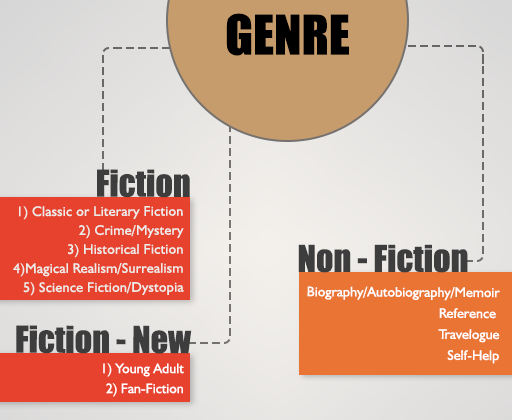
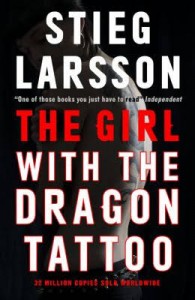
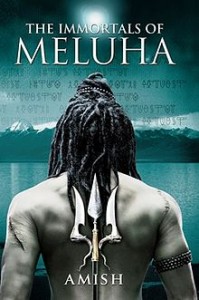

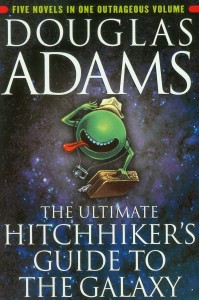
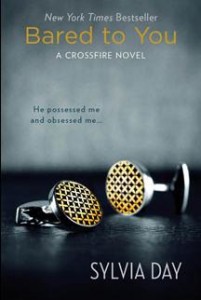
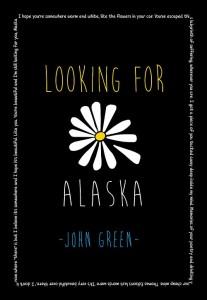

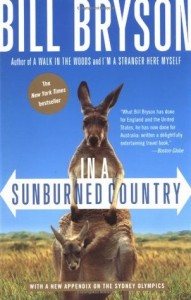
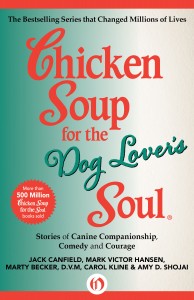
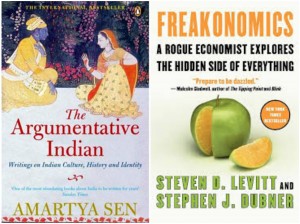

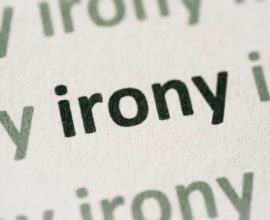
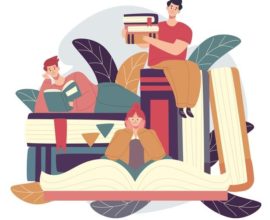

Pingback: 10 Amazing Historical Fiction Books For Every History Buff()